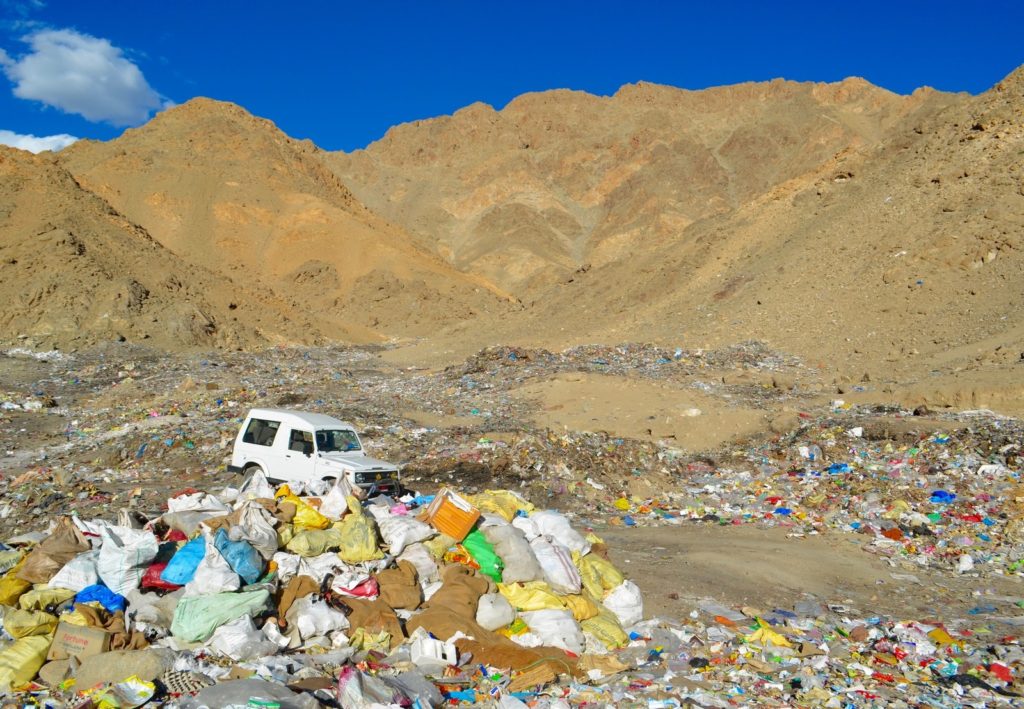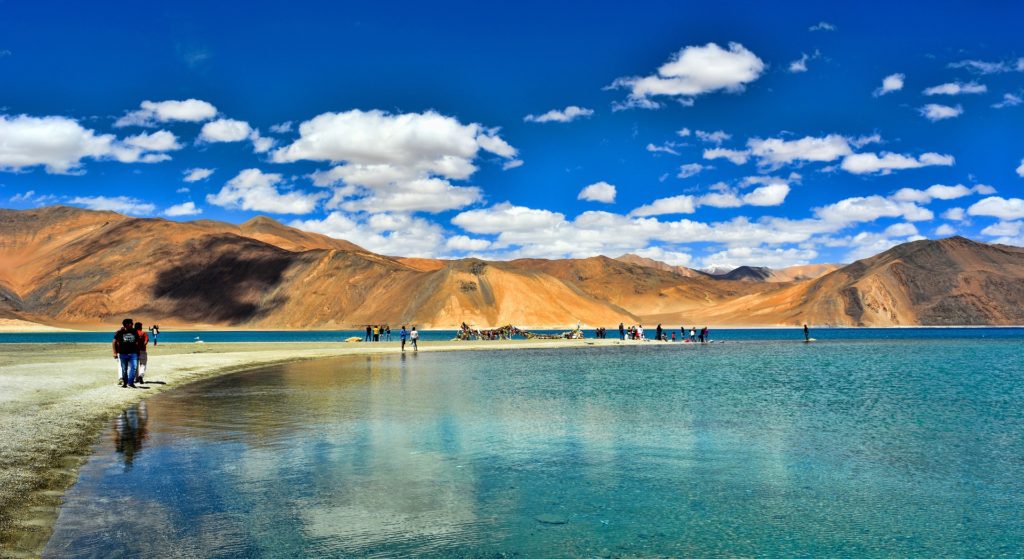Did you know that places where humans never set foot are the most beautiful places in the world?
That’s the beauty of natures’ rawness.
Traveling is one of the most adventurous things. It expands our minds by experiencing the place. It helps us to explore new habits and practices throughout the world and whatnot.
But do you know? What our lonely planet is getting in return for that?
THIS👇


If you are not careful, your traveling can be destructive to the ecosystem and endanger the existence of many flora and fauna.
A publication in Nature Climate Change says that about 8% of greenhouse gas emission is because of traveling. This fact is from the data collected and analyzed from 160 countries.
So you HAVE TO tune your travel habits and minimize your impact on the species and locals in the surroundings.
If you consider yourself a traveler, it’s your responsibility to opt for sustainable traveling and educate yourself and other fellow travelers about sustainable tourism.
In this post, I am going to share about Sustainable Traveling and How to make a constructive impact and be a sustainable traveler.
Sustainable Traveling
Our wanderlust should not affect the environment in any way. Period!
Sustainable traveling is an act of reducing the negative impacts on the environment created by travel and tourism.
Note: Air travel is so awful for nature. It is a cause for 40% of carbon emission.
Unless you adapt to sustainable traveling, the easiest way to reduce our carbon footprint is to:
STOP
TRAVELING!
Have you ever heard of Costa Rica? Costa Rica is a Central American country that is known for its sustainable tourism practice. Around 25% of the country is national parks and wildlife reserves.
Three Pillars of Sustainable Travel
The sustainability concept has three pillars, sustainable development and practice need these three pillars:
- Environmental pillar
- Social pillar
- Economic pillar
Environmental Pillar
Environmental sustainability is all about an increased positive impact on Earth during travel.
We should preserve the natural resources for our children’s generation. While exploring the world, we should look for ways that reduce carbon footprint.
You can implement this by traveling locally using bicycles (which is the main motto of our blog) or any other local transport.
You don’t need to go across the planet to gain the experiences which you get from traveling. Explore your home country. Do hiking, cycling, biking, trekking in your nationality.
But at some time, you can’t avoid flying. At that time, buy carbon-offsets. Carbon offset, along with your plane ticket, will donate many conservative projects.
Pack reusables with you. Avoid non-reusable plastics as much as you can.
Social Pillar
In social sustainability, we have to focus on localities of the place. Due to travel and tourism, people in the area are affected more in a way. The location is always jammed because of the crowd. It affects their peace of the living.
Don’t dump the place with garbage, mainly food waste. Learn to know and respect the culture of that place and adhere to that. Travel like a local.
Economic Pillar
Economic sustainability is beneficial for the local community in that area. Overseas travel companies shouldn’t profit from travel and tourism.
A responsible traveler will maintain economic sustainability by supporting the local shops, business, etc.. You could help the local economy by buying souvenirs from handicraft stores and eating local food.
Use your money in local tour guides instead of fancy tourist operators or organizations.
Why is Sustainable Tourism the need of the hour?
We can’t avoid traveling or tourism, so we have to do it without leading our community or future generation in a destructive path.
Traveling is a way to socialize and we humans are inherently social creatures. The Travel and tourism industry contributes a lot to a country’s economy.
Tourism affects the environment negatively in a lot of ways. This impact is uncontrollable when the number of tourists in a place becomes higher than expected. It can lead to pollution, extinction of endangered species, and destroying animal habitats and many more things:-
- It creates a scarcity of water resources like tourists polluting a pond, river, etc. which also affects the locality.
- Hotels and other facilities for tourists are built between forests which destroy the natural habitat and also result in deforestation.
- The roads used for trekking or driving in the way of forests often leads wild animals wandering in the village near forests.
- The increase in transportation in air, road, rail results in air pollution, specifically, air transportation leaves a lot of carbon footprints.
- Waste disposal by people making road trips and trekking causes land pollution and soil degradation.
- Tourism also affects the marine ecosystem severely by building hotels and resorts near the sea, which causes soil erosion and other land degradation like earthquakes. Other marine activities, when done irresponsibly like scuba diving, will also affect the species in the ocean.
You need to consider the factors mentioned earlier and follow sustainable traveling.
Sustainability in tourism meets the need of the present without compromising the needs of the future generation. In this practice, resources are utilized wisely, so after fulfilling our immediate requirement, it’s also conserved further.
Sustainable Traveling IS the right way of Traveling!
How to be a Sustainable Traveler?
So here are some tips for you to incorporate in your future trip to be a sustainable traveler:
- Reduce flying
To be a sustainable traveler, you should avoid the most significant cause of CO2 emission: Yes! Flying.
Instead of flying, take a road trip or travel using a bicycle across your country. Avoid flying as much as you can. But in unavoidable situations, pay your carbon offsets fee along with the plane ticket.
- Pack your toiletries
Avoid sample products like mini soap or shampoo bottles, by bringing your toiletries from home. This way, you can stop a lot of one time used plastic products.
- Stay eco-friendly
Try to pack an eco-friendly travel kit, and avoid buying plastic water bottles, plastic utensils (cups, spoons, forks). Pack your appliances made of steel or wood. Stay at eco-friendly lodges if possible.
- Be a minimalist while packing
Consider mix-matching clothes while travelling, because it’s a big water saver from washing your clothes and saves time as well.
- Travel Local
Traveling is not always taking long trips across the nation or your state. Try to go on your foot often.
- Avoid traveling to an overcrowded area
Travel to places which are less in the crowd, don’t suffocate the areas that are suffering from overcrowded tourism. Spend your cash such that it helps the local community. Stay at local lodges and eat local food.
- Know your Travel Provider
Before you choose any travel operators or agents, ask them about their company’s environmental and responsible tourism policies. Choose only those who support responsible tourism.
Read: Top Travel companies in India
- Never buy wildlife products
When you buy a product made of wildlife, you’re unintendedly promoting the killing and trafficking of rare and endangered wildlife. Always avoid buying such products.
- Clear the trash on the way
While travelling by foot or trekking, pick up the trash and plastics waste on your way and dispose of it.
Of course, this is a shortlist of what we could do, but at the moment of writing this, I can do this much only. Charity Begins at Home!
Sustainable Travel International
Want to help the other travelers to become a sustainable traveler and create awareness all around the world? Visit Sustainable Travel International.
They help to reduce the harmful impacts on our planet by creating a healthy tourism community. For about fifteen years, they have been creating awareness among travelers and tourists to follow sustainable travelling. They united organizations, NGO’s, Governments to balance the economy and the protection of the natural assets.
FAQ’s
Sustainable tourism reduces negative impacts on the environment and the local community caused by travel and tourism.
It is an ability to be sustained and upheld to maintain quality.
Sustainable travel is a way of traveling in an eco-friendly way without harming the environment and not affecting the local people’s life.
The most eco-friendly way to travel is by traveling on foot or bicycle. Avoid airplanes as much as you can in your travels. If you can’t avoid planes, try to stack all your plans in one trip instead of flying multiple times a year.
Conclusion
I hope you understood the magnitude of the side-effects of not doing travel and tourism in the right way.
Are you planning your next trip to be a sustainable trip? I would like to believe so.
Start incorporating the tips of sustainable traveling mentioned above in your future travel. You need not to make some earth-shattering improvements in your way of traveling, start taking small steps. It does make a difference.
Share your thoughts on sustainable traveling and suggestions to become a sustainable traveler in the comments below.
Happy Traveling!